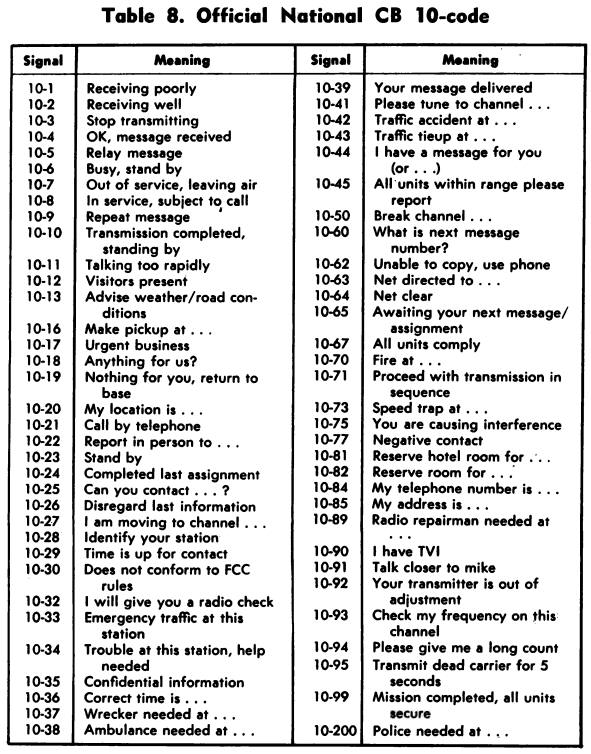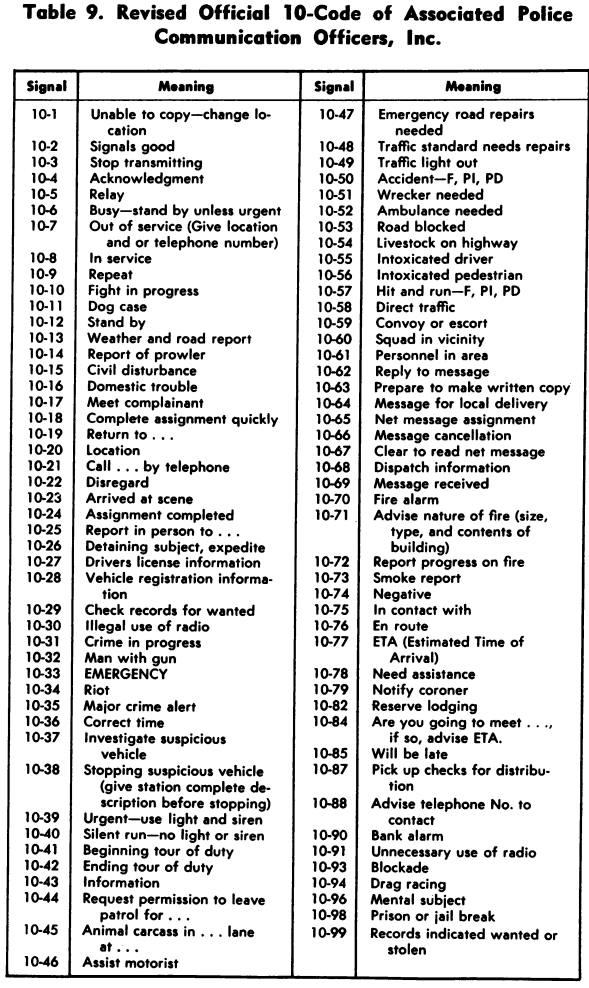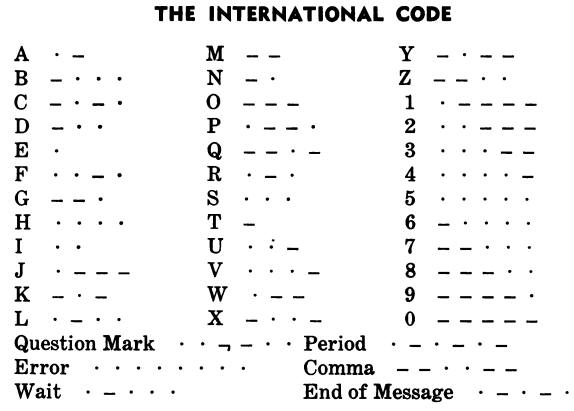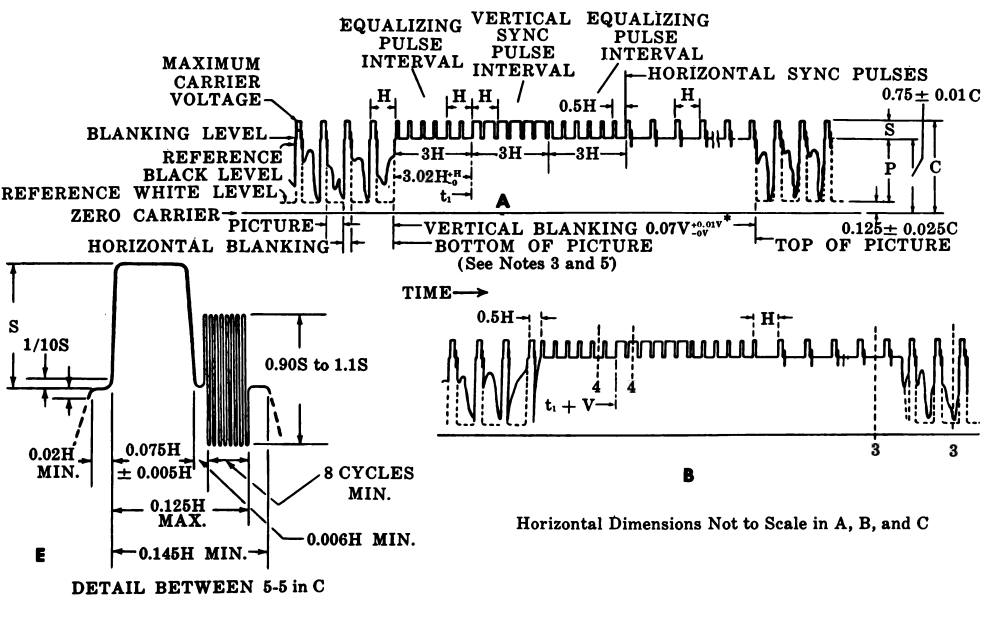
Communications Data
TELEVISION SIGNAL STANDARDS
The signal standards for television broadcasting are given in Figs. 75A and B.
75A and B

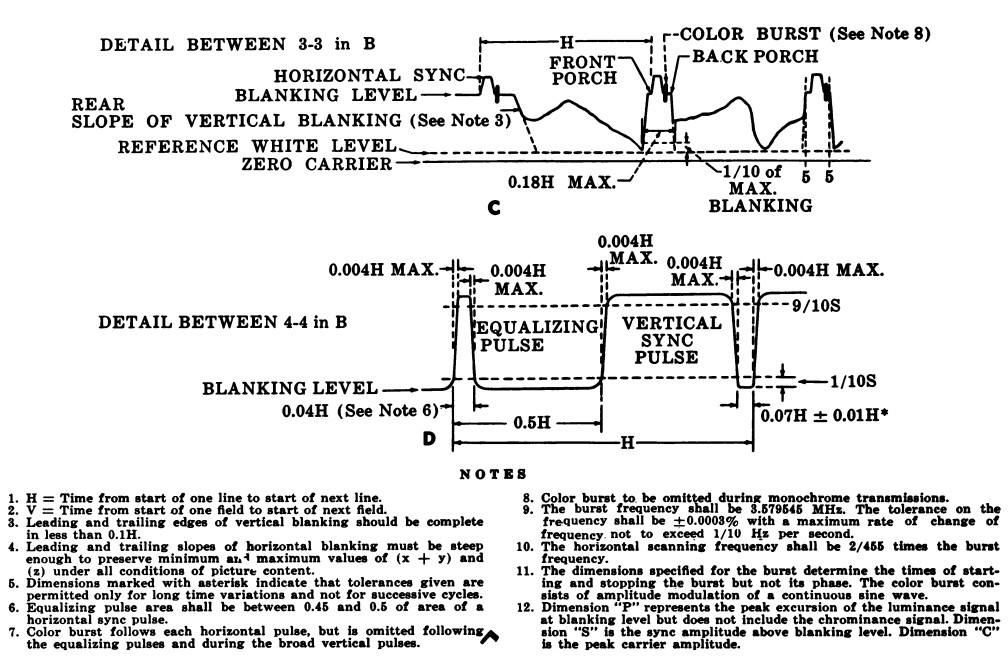
Note: The standards given here are for color transmission. For monochrome transmission, the standards are the same except the color burst signal is omitted. Also, for color the vertical and horizontal scanning frequencies are 59.94 and 15,734.264 Hz, respectively; for monochrome they are 60 and 15,750 Hz.
TELEVISION CHANNEL FREQUENCIES
The chart in Fig. 76 lists the frequency limits of all television channels and the frequency of the picture and sound carriers of each channel.

CITIZENS BAND RADIO
Most Citizens band radio stations are covered by a Class-D license. Class-D stations may operate on any of the 23 chan- nels listed in Table 5.
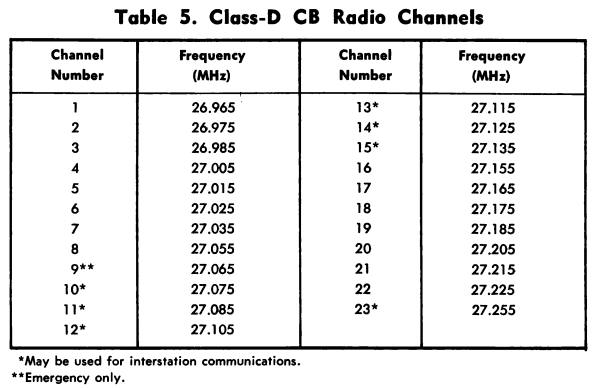
COMMERCIAL OPERATOR LICENSES
The classes of commercial radio operator licenses issued by the Federal Communications Commission are classified basically as radiotelegraph and radiotelephone licenses.
Examination Elements Written examinations are composed of questions from various categories called elements. These elements, and the types of questions in each, are:
Element 1: Basic Law. Provisions of laws, treaties, and regulations with which every operator should be familiar.
Element 2: Basic Operating Practice. Radio operating procedures and practices generally followed or required in communicating by means of radio- telephone stations.
Element 3: Basic Radiotelephone. Technical, legal, and other matters applicable to the operation of radiotelephone stations other than broadcast.
Element 4: Advanced Radiotelephone. Advanced technical, legal, and other matters particularly applicable to the operation of the various classes of broad- cast stations.
Element 5: Radiotelegraph Operating Practice. Radio operating procedure and practices generally fol- lowed or required in communicating by means of radiotelegraph stations primarily other than in the maritime mobile services of public correspondences.
Element 6: Advanced Radiotelegraph. Technical, legal, and other matters applicable to the operation of all classes of radiotelegraph stations, including operating procedures and practices in the maritime mobile services of public correspondences, and associated matters such as radionavigational aids, message traffic routing and account- ing, etc.
Element 7: Aircraft Radiotelegraph. Basic theory and practice in the operation of radiocommunications and radionavigational systems aboard aircraft.
Element 8: Ship Radar Techniques. Specialized theory and practice applicable to the proper installation, servicing, and maintenance of ship radar equipment in general use for marine navigational purposes.
Examination Requirements
Applicants for licenses must be able to transmit and receive spoken messages in English, and be able to pass the examination elements required for the license.
The requirements for the various licenses are:
1. Radiotelephone second-class operator licenses. Written examination elements 1, 2, and 3.
2. Radiotelephone first-class operator licenses. Written examination elements 1, 2, 3, and 4.
3. Radiotelegraph second-class operator license. Transmitting and receiving code test of 16 code groups per minute. Written examination elements 1, 2, 5, and 6.
4. Radiotelegraph first-class operator license. Transmitting and receiving code test of 25 words per minute in conversational language and 20 groups per minute in code. Written examination elements 1, 2, 5, and 6.
5. Radiotelephone third-class operator permit. Written examination elements 1 and 2.
6. Radiotelegraph third-class operator permit. Transmitting and receiving code test of 16 code groups per minute. Written examination elements 1, 2, and 5.
AMATEUR OPERATOR PRIVILEGES
Examination Elements Examinations for amateur operator privileges are composed of questions from various categories, called elements. The various elements and their requirements are:
Element 1(A): Beginner’s Code Test. Code test at 5 words per minute.
Element 1(B): General Code Test. Code test at 13 words per minute.
Element 1(C): Expert’s Code Test. Code test at 20 words per minute.
Element 2: Basic Law. Rules and regulations essential to beginners’ operation, including sufficient elementary radio theory to understand these rules.
Element 3: General Regulations. Amateur radio operation and apparatus, including radio- telephone and radiotelegraph. Provisions of treaties, statutes, and rules and regulations affecting all amateur stations and operators. Intermediate Amateur Practice. Involving
Element 4(A): intermediate level for general amateur practice in radio theory and operation as applicable to modern amateur techniques, including—but not limited to —radiotelephony and radiotelegraphy.
Element 4(B): Advanced Amateur Practice. Advanced radio theory and operation applicable to modern amateur techniques, including— but not limited to—radiotelephony, radiotelegraphy, and transmission of energy for (1) measurements and observations applied to propagation, (2) radio control of remote objects, and (38) similar experimental purposes.
Examination Requirements
Applicants for original licenses will be required to pass examinations as follows:
1. Amateur Extra Class. Elements 1(C), 2, 3(B), and 4(B). Two years experience in amateur radio not in- cluding Novice Class or Technician Class.
2. Advanced Class. Elements 1(B), 3, and 4(A). . General Class. Elements 1(B) and 3.
3. Conditional Class. Elements 1(B) and 3.
4. Technician Class. Elements 1(A) and 3.
5. Novice Class. Elements 1(A) and 2.
NOTE: Examinations for licenses (1), (2), and (8) above must be given by an FCC examiner. The examinations for licenses (4), (5), and (6) are taken by mail, under the supervision of a volunteer examiner.
AMATEUR (“HAM”) BAND
The various bands of frequencies used by amateur radio operators (“hams”) are usually referred to in meters in- stead of the actual frequencies.
The number of meters approximates the wavelength at the band of frequencies being designated.
The meter bands and their frequency limits are given in Table 6. (Note: Frequencies between 220 and 225 MHz are sometimes referred to as 1% meters, and between 420 and 450 MHz as % meter.)

INTERNATIONAL Q SIGNALS
The international Q signals were first adopted to enable ships at sea to communicate with each other or to foreign shores without experiencing language difficulties.
The signals consist of a series of three-letter groups starting with Q and having the same meaning in all languages. Today, Q signals serve as a convenient means of abbreviation in communications between amateurs.
Each Q signal has both an affirmative and an interrogative meaning.
The question is designated by the addition of the question mark after the Q signal. The most common Q signals are listed in Table 7.
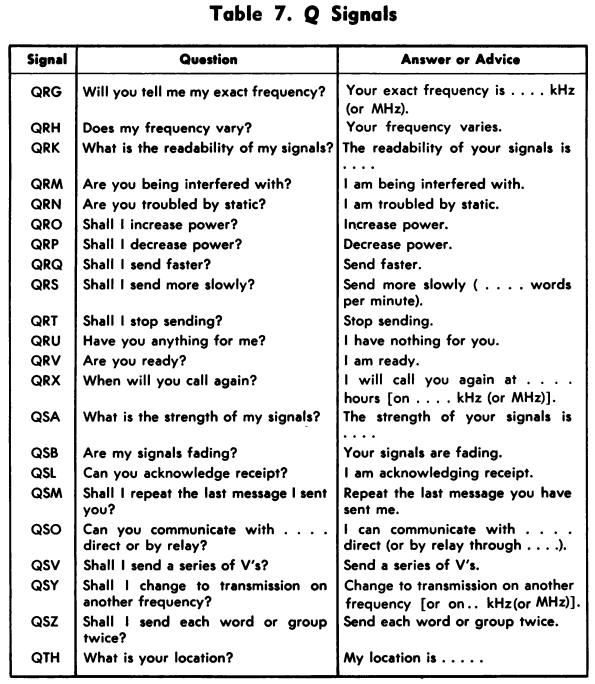
“10” SIGNALS The abbreviations based on the number 10 plus a suffix were originally used for communication between police units. Now they are often used in other forms of two-way communications. The most common signals are given in Table 8. The police signals are given in Table 9.
